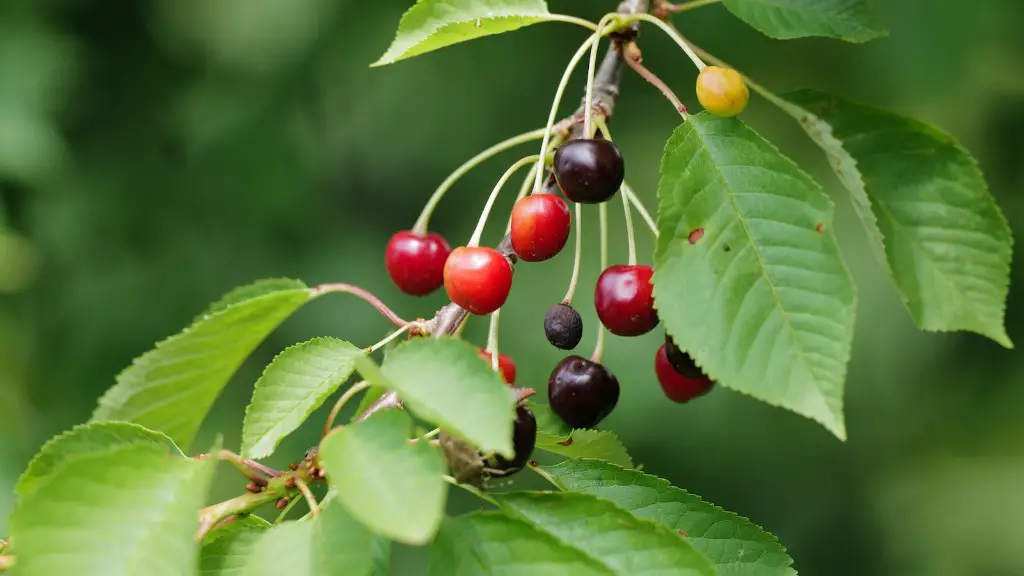Avocados are a nutritious and delicious superfood that many people simply can’t get enough of. With their creamy texture, distinctive flavor, and countless health benefits, it’s no surprise that avocados are in high demand. To satisfy your own cravings, you might consider growing an avocado tree in a container. With the right conditions and maintenance, you can keep it healthy and happy for many years.
Avocados are an ideal plant for container growing because of their slow growth habit. Contrary to popular belief, you can get new avocado trees to grow in containers, albeit slowly compared to those grown in the ground. Trees grown in a climate with ample sun, moderate irrigation, and some occasional fertilizer tend to live the longest.
Before you get started, you’ll need to choose the right type of avocado. Some varieties are better suited for container growing than others. It’s generally recommended to select a dwarf variety in order to better manage the size and growth habit of your avocado tree. Popular dwarfs for container growing include ‘Littlecado’, ‘Bacon’, and ‘Fuerte’.
When selecting a container for your avocado, the bigger the better. Look for a pot that has plenty of drainage holes and is at least 15-20 gallons in size. It’s best to use a soil-less potting mix and fertilize your avocado tree every month during the active growth period. Avoid overwatering and make sure your container has adequate drainage.
To keep your avocado tree healthy and thriving, you’ll need to provide it with plenty of sunlight. Aim for at least six hours of direct sunlight every day. If you don’t have the right conditions for in-ground gardening, you may be able to find an area with the perfect amount of light in your home, such as a sunroom or an enclosed balcony. You can also move your container to different spots each season to give it access to the most light.
Once your avocado tree is growing, it’s essential to monitor for pests and diseases. Common pests that can affect container-grown avocado trees include root-knot nematodes, mealybugs, and spider mites. Diseases such as canker and root rot can also be problematic. To prevent such issues, inspect your tree regularly and take preemptive measures to keep it healthy.
To ensure that your tree receives enough nutrients, you can occasionally top-dress with aged compost. Additionally, you should regularly prune and shape your avocado tree to encourage healthy growth and flowering. If you follow this advice, and provide your avocado tree with the right care and conditions, you can bring your vision of a bountiful avocado harvest to life.
Transplanting
The ideal time to transplant an avocado tree is in late winter or early spring. Before you start, make sure the tree’s root system is firmly established. If your potted avocado tree is overgrown and root-bound, it’s time to transplant. You can increase the size of your container or transplant the tree into the ground or a larger pot.
When transplanting, make sure to water the plant prior to uprooting, and vigorously shake off any attached soil. If there are any damaged roots, prune them off with sharp scissors or a knife before replanting in the new container or outdoors. Heavily water the soil after replacing it and wait for the water to drain completely before moving your tree to its permanent location.
Harvesting
Avocados grown in containers can take several months to fruit, depending on the variety. When the tree’s flowers eventually turn into fruit, you can expect them to fully ripen in around 6-8 months. To harvest avocados, you can either twist them off the tree with your hands, clip them with scissors, or use a fruit picker if your tree is large and tall. Be careful not to damage the flower or fruits while picking.
When harvesting from a potted tree, you might find that the yield is limited, particularly if your tree is small or young. To maximize your harvest, it’s critical to regularly remove and discard any underdeveloped fruits. This will keep the tree healthy and increase its productivity. Additionally, make sure to leave a generous number of flowers from the previous season in order to increase your yield in the future.
Fertilizing
Avocados grown in containers will often require more fertilizing than those grown in the ground. Despite the extra work, you’ll be rewarded with an abundance of delicious fruits. To get the most out of your tree, use a mild fertilizer with a nitrogen-phosphorus-potassium ratio of 4:3:2. It’s best to feed your potted tree every 4-6 weeks between early spring and late summer.
If your avocado tree is unable to access additional nutrients from the soil, you can supplement these with a mix of compost and aged manure. Nitrogen-rich organic amendments, such as alfalfa meal or cottonseed meal, can also be used to increase the nutrient content of the soil. Keep in mind, however, that you should use low doses at first and increase the amount as your tree grows.
Protecting from Cold
The cold can be very damaging to avocado trees, even if they are grown in a pot. Because of this, it’s important to keep your tree in an area with adequate protection from extreme temperatures. If possible, move the container to an area with a consistent temperature between 40 and 50 degrees Fahrenheit. This can help protect your tree from cold snaps and frosts.
If you live in Zone 10 or lower, you should also consider sending your avocado tree indoors for the winter. Use a grow light to supplement the natural sunlight and make sure the temperature inside your home is kept between 65 and 75 degrees Fahrenheit. With the proper precautions, you should avoid any significant harm from the cold.
Treating Diseases and Pests
Given the right conditions, avocado trees can become susceptible to various health issues. If you encounter any signs of root rot, canker, or other diseases, you should act immediately. Start by removing any brown or discolored leaves and pruning away any affected branches. You can also try sterilizing any affected areas with heated water or a mild fungicide.
If your avocado tree is attacked by pests such as mealybugs, you can spray them off with a hose or use organic insecticides with organic neem oil or pyrethrins. To prevent infections, you should also look out for any ants or beetles. These pests are often carriers of infection-causing microbes and can quickly damage a potted avocado tree. If you notice any ant activity, use baits or sprays to keep them away from your tree.


